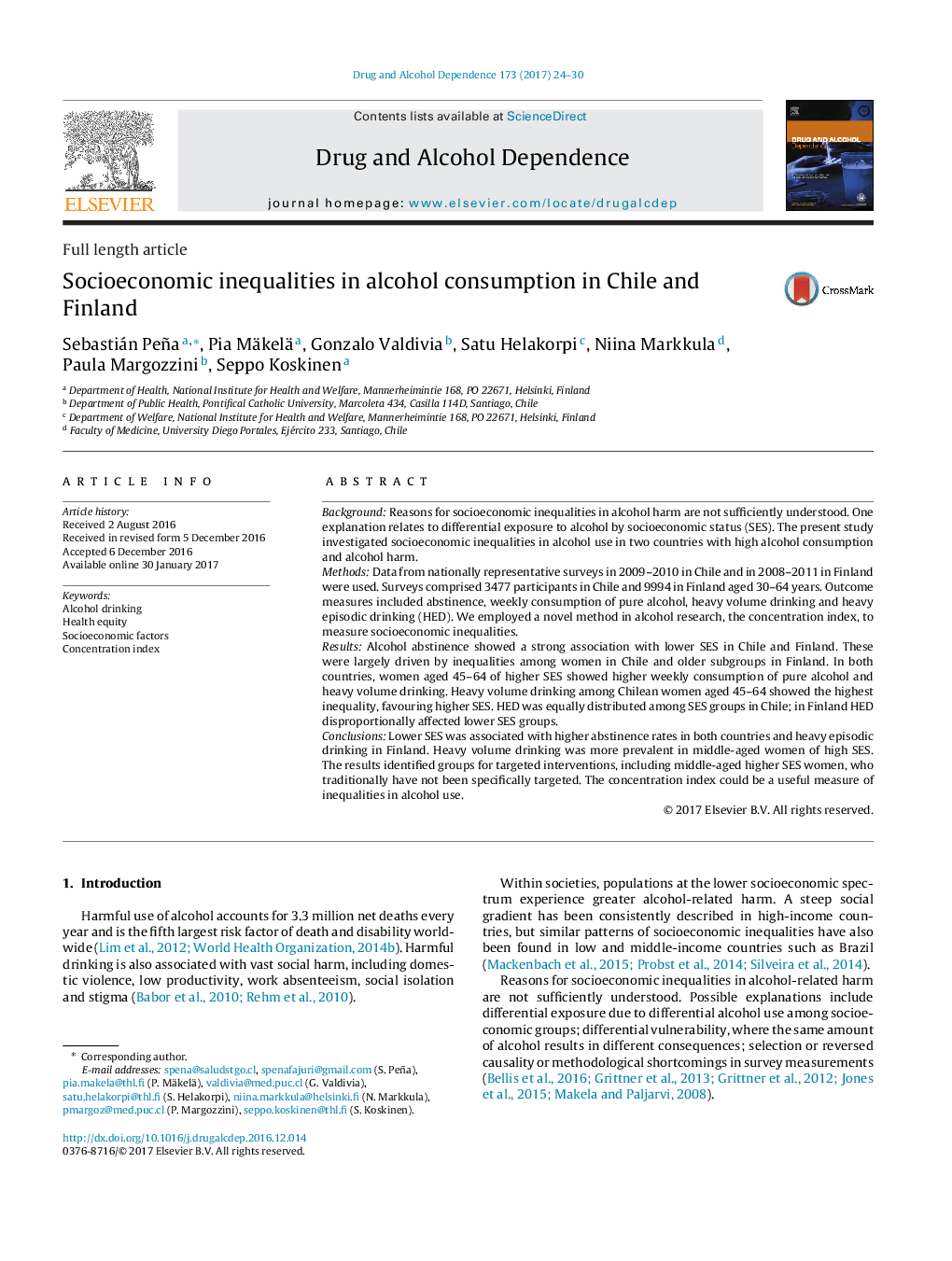| کد مقاله | کد نشریه | سال انتشار | مقاله انگلیسی | نسخه تمام متن |
|---|---|---|---|---|
| 5120151 | 1486118 | 2017 | 7 صفحه PDF | دانلود رایگان |
- Evidence of different exposure to alcohol by socioeconomic groups is inconsistent.
- Methodological shortcomings in measuring inequalities can partly explain this.
- The concentration index was used to overcome these limitations.
- Lower socioeconomic status (SES) was associated with both abstinence and heavy episodic drinking.
- Middle-aged women of higher SES consumed more alcohol and drank more heavily.
BackgroundReasons for socioeconomic inequalities in alcohol harm are not sufficiently understood. One explanation relates to differential exposure to alcohol by socioeconomic status (SES). The present study investigated socioeconomic inequalities in alcohol use in two countries with high alcohol consumption and alcohol harm.MethodsData from nationally representative surveys in 2009-2010 in Chile and in 2008-2011 in Finland were used. Surveys comprised 3477 participants in Chile and 9994 in Finland aged 30-64 years. Outcome measures included abstinence, weekly consumption of pure alcohol, heavy volume drinking and heavy episodic drinking (HED). We employed a novel method in alcohol research, the concentration index, to measure socioeconomic inequalities.ResultsAlcohol abstinence showed a strong association with lower SES in Chile and Finland. These were largely driven by inequalities among women in Chile and older subgroups in Finland. In both countries, women aged 45-64 of higher SES showed higher weekly consumption of pure alcohol and heavy volume drinking. Heavy volume drinking among Chilean women aged 45-64 showed the highest inequality, favouring higher SES. HED was equally distributed among SES groups in Chile; in Finland HED disproportionally affected lower SES groups.ConclusionsLower SES was associated with higher abstinence rates in both countries and heavy episodic drinking in Finland. Heavy volume drinking was more prevalent in middle-aged women of high SES. The results identified groups for targeted interventions, including middle-aged higher SES women, who traditionally have not been specifically targeted. The concentration index could be a useful measure of inequalities in alcohol use.
Journal: Drug and Alcohol Dependence - Volume 173, 1 April 2017, Pages 24-30
